
If you’re looking for information about visiting the Fort Loudoun Historic Site in Franklin County, you’re in the right place!

The 207-acre Fort Loudoun Historic Site is home to a modern reproduction of a fort originally built on the same site in 1756, during the French and Indian War.

In addition to the rebuilt fort (dedicated in June 1993), the site also features a Visitor Center and museum, located in the James Patton House (built in 1780).

The grounds of the historic site are open daily from dawn until dusk; the interior of the fort and Visitor Center are open during special events held throughout the year (more on that at the end of this article).

Fort Loudoun Historic Site is located just off of Route 30 in Franklin County at 1720 Brooklyn Rd N, Fort Loudon, PA 17224.
Look for this boldly-painted entrance sign along Route 30 as a landmark.

A Brief History of PA’s Fort Loudoun
The original Fort Loudoun in Pennsylvania was erected in 1756 during the French and Indian War, where it served as a crucial British stronghold along Forbes Road during General John Forbes’ campaign to drive the French out of Fort Duquesne (now Pittsburgh).

The fort was named after John Campbell, the fourth Earl of Loudoun, who became Commander of British forces in North America in July 1756.

There were at least two other Fort Loudouns built in this time period – one in Virginia and one in Tennessee.

Pennsylvania’s Fort Loudoun served as a stopping-off point for both men and supplies going westward during the French and Indian War (1754–1763) as well as the subsequent Native American uprising known as Pontiac’s Rebellion (1763-1765).

Fort Loudoun and the Black Boys Rebellion
One of the most interesting chapters in Fort Loudoun’s 9-year history occurred during the final year of its existence.

It was in 1765 that the fort played a central role in the Black Boys Rebellion (AKA the Allegheny Uprising), a 9-month armed uprising between citizens of the Colony of Pennsylvania and the British Army.

This rebellion was led by James Smith, a notable local figure and frontiersman who as a teenager had been captured by Native Americans and forced to live amongst them for 5 years, before escaping in 1760.
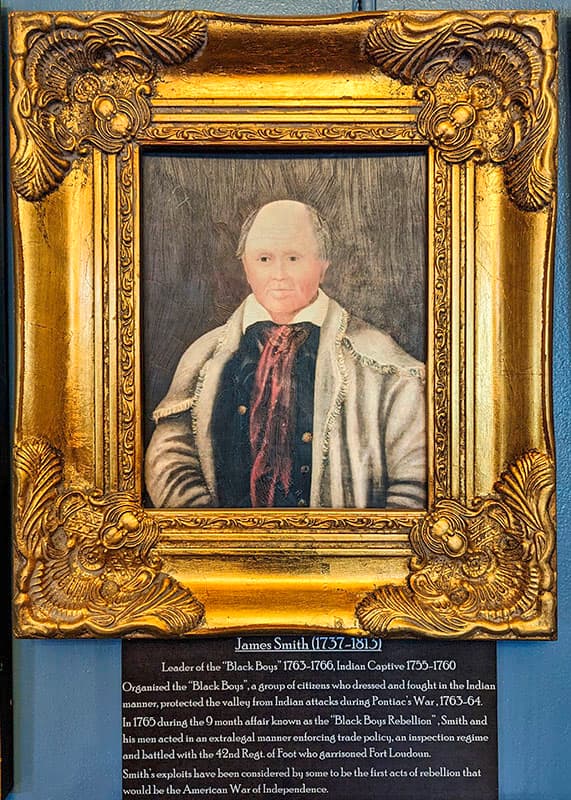
Smith and other local citizens were angered by the “unofficial” British policy of looking the other way and allowing politically-connected merchants to sell items such as guns, gunpowder, lead, hatchets and knives to Native Americans , supplies that could be used against settlers, and a practice that was officially forbidden by provincial law.

Disillusioned by this injustice, Smith and his band of colonists, known as the “Black Boys” (because they their blackened faces with charcoal for disguise) intercepted and destroyed a convoy carrying these “war-like goods” that they believed would end up in Native American hands.

Months of tension and violence followed, reaching its zenith at Fort Loudoun that November, where Smith and his men engaged in a 2-day armed siege of the British troops inside the fort.

Ultimately, the outmanned and outgunned British troops inside the fort were allowed to leave, withdrawing to Fort Bedford.

Some historians credit that siege with being the first act of rebellion in what would become the American Revolution.

Fort Loudoun Historic Site Today
Today, the meticulously reconstructed fort offers visitors an authentic glimpse into 18th-century military life.

Entering through its gates is like stepping into a different epoch, where you can feel a tangible connection to the dramatic events that unfolded here more than 250 years ago.

Events like the annual Fort Loudoun Market Fair offer a deep-dive into what life was like for soldiers and citizens alike during this colonial period in American history.

During special events like this, reenactors breathe life into history through demonstrations of everyday skills and trades of that time period.

During my most recent visit, I had the chance to witness a blacksmithing demonstration, which was both educational and entertaining.

The passion and knowledge of the reenactors is commendable, making history accessible and engaging for visitors of all ages.

One of the highlights of my visit was exploring the reconstructed soldiers’ barracks.

The attention to detail in the restoration work allows you to visualize the daily lives of the soldiers stationed here.

The site’s serene setting also makes it a perfect spot for a peaceful stroll.

Numerous hiking trails crisscross the property, and the Conococheague Creek flows through the historic site and behind the fort.

Final Thoughts
For anyone interested in colonial or military history, Fort Loudoun is a must-visit.
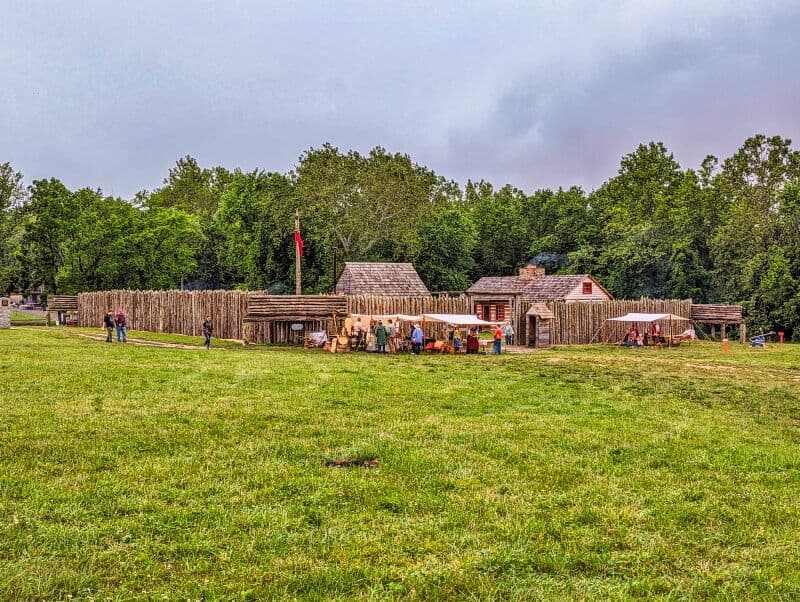
It’s a great destination for families, offering a unique educational experience that is both engaging and thought-provoking.
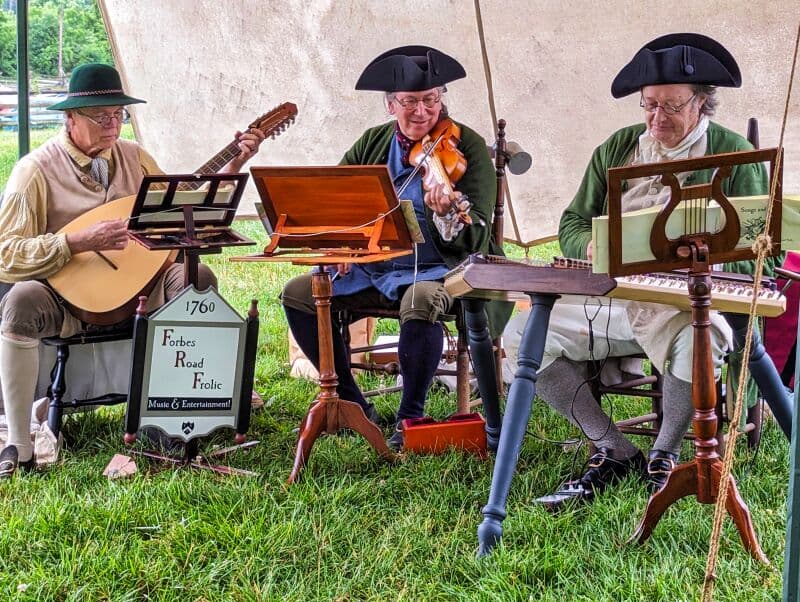
You can check out the fort’s upcoming special events on the historic site’s OFFICIAL WEBSITE.
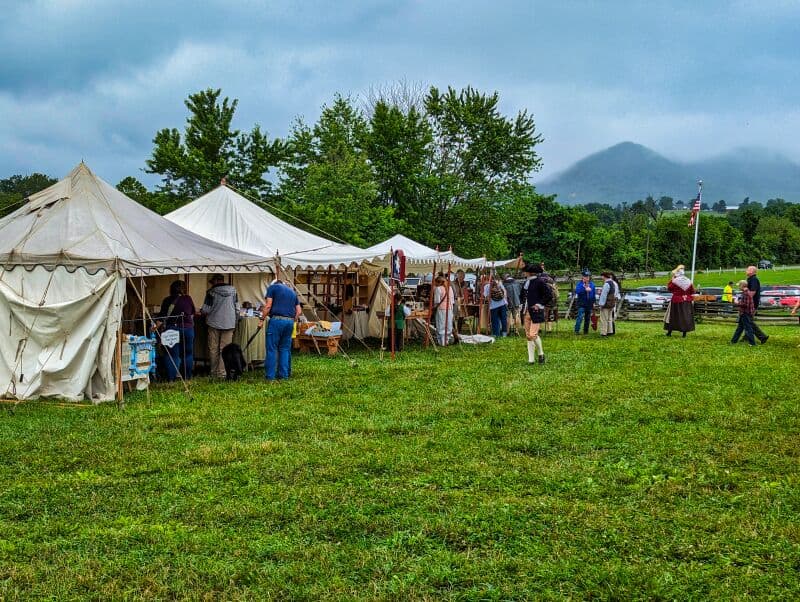
The fort is more than a historical site; it’s a portal to understanding the tenacity and resilience of those who came before us.

For those looking to connect with history in a meaningful way, a visit to Fort Loudoun Historic Site in Franklin County is an unforgettable journey through time.

Nearby Attractions
10 Must-See Attractions in Franklin County is your guide to even more great things to see and do near the Fort Loudoun Historic Site.

Related Attractions
Fort Ligonier in Westmoreland County is a historically accurate reproduction of a British fort originally constructed in 1758 during the French and Indian War.

The museum at Fort Ligonier contains one of the most complete collections of French and Indian War artifacts in existence, many excavated from the ruins of the original Fort Ligonier itself.

The Fort Bedford Museum in Bedford County interprets the history of another French and Indian War-era fort along Forbes Road in western PA.

Bushy Run Battlefield Park in Westmoreland County is the only historic site in PA that deals exclusively with Pontiac’s War (which Fort Loudoun played a role in).

The Fort Pitt Museum at Point State Park is housed in a recreated bastion of Fort Pitt, the original having been built in 1758 by the British.
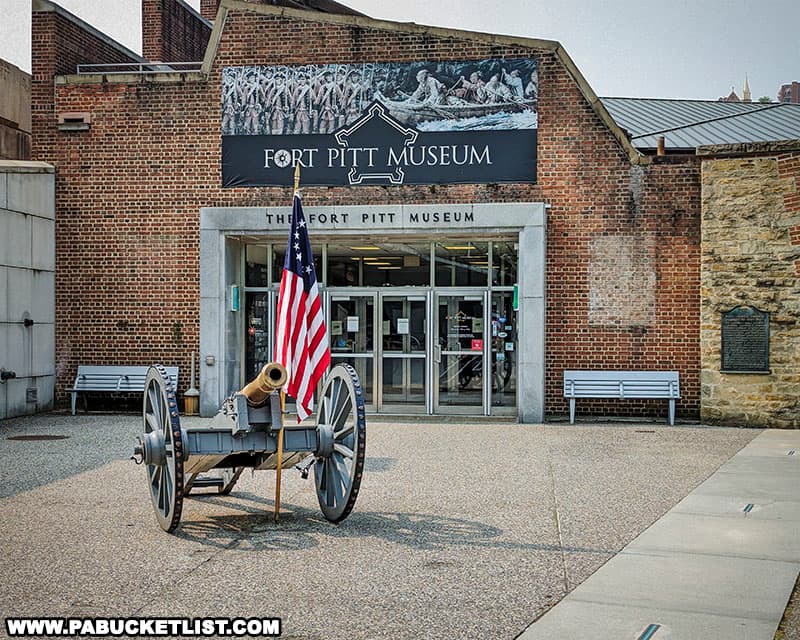
The primary focus of the Fort Pitt Museum is explaining the role that the fort played during the French and Indian War.

Fort Necessity in Fayette County is the site of the first battle in the French and Indian War, a global struggle for empire between the two superpowers of that time, France and England.

Like the abovementioned historic sites, Fort Necessity is home to both a reproduction of the original fort, as well as an excellent museum.

Did you enjoy this article?
If so, be sure to like and follow PA Bucket List on Facebook, Instagram, and/or Pinterest to stay up-to-date on my latest write-ups about the best things to see and do in Pennsylvania!
Click on any of the icons below to get connected to PA Bucket List on social media.


